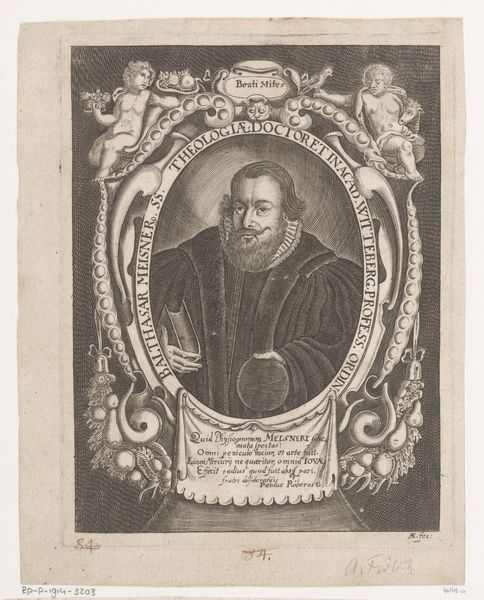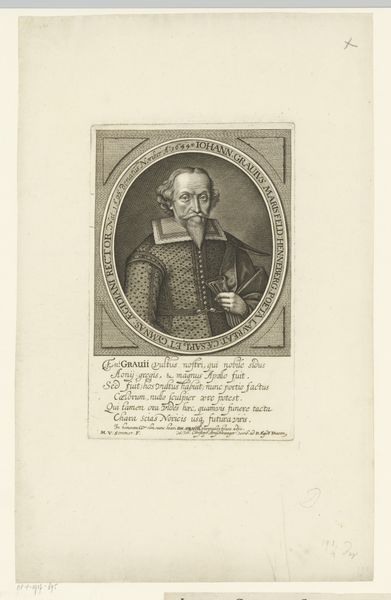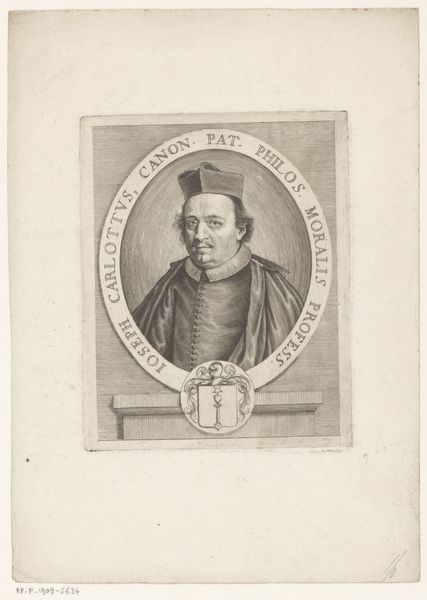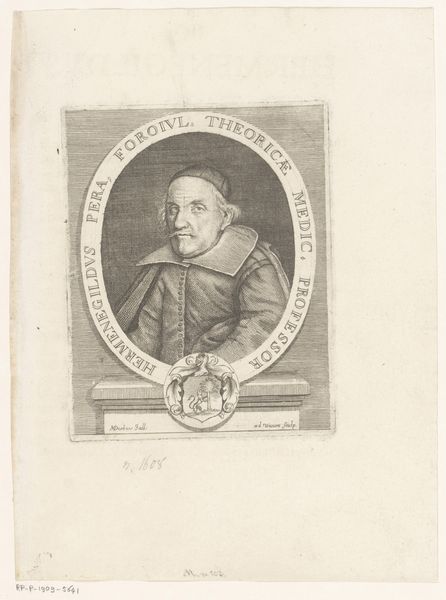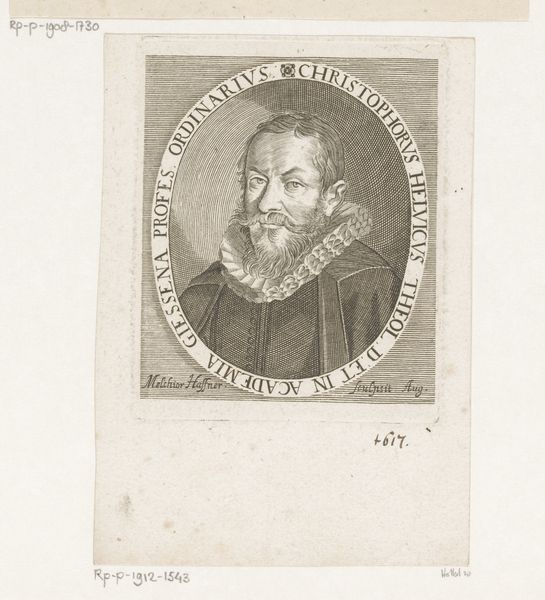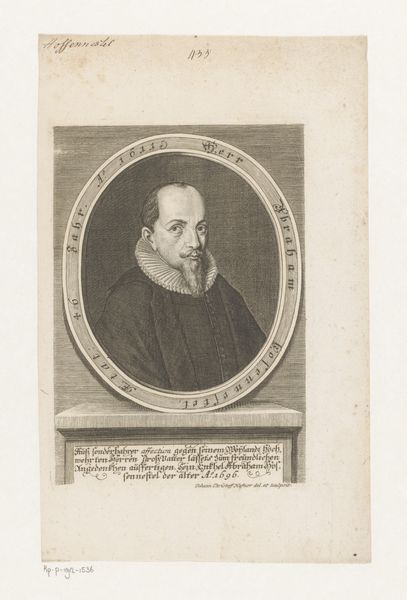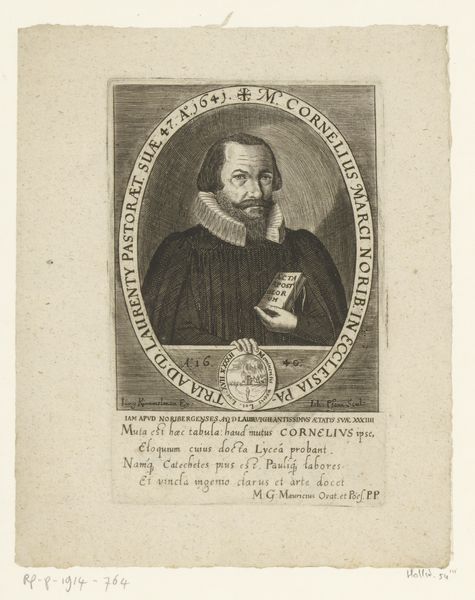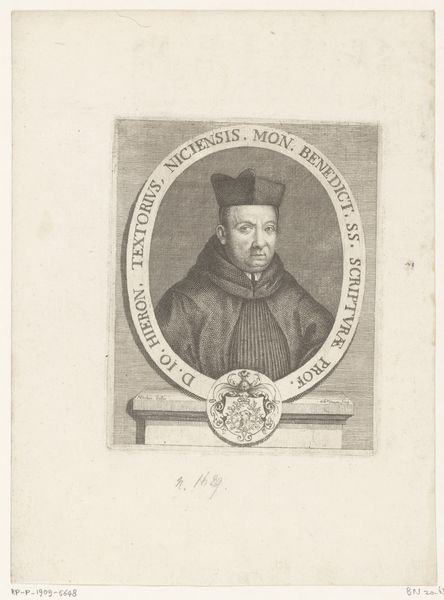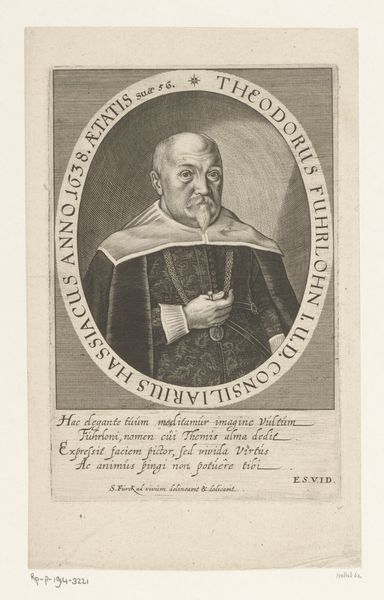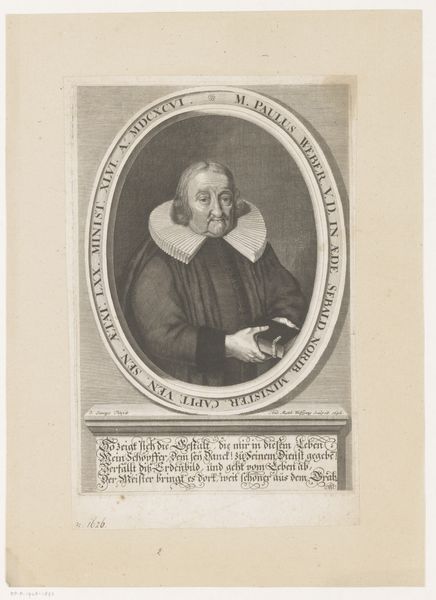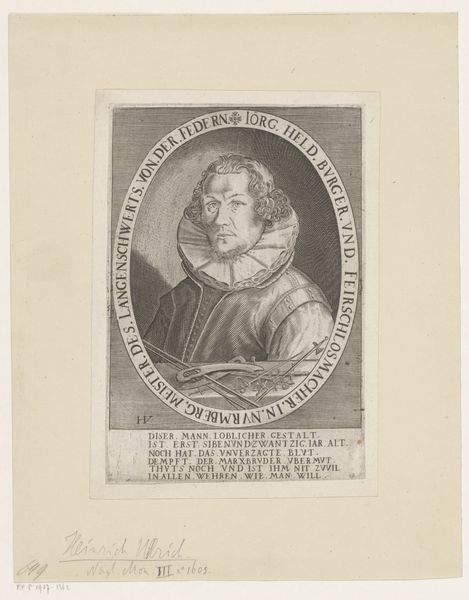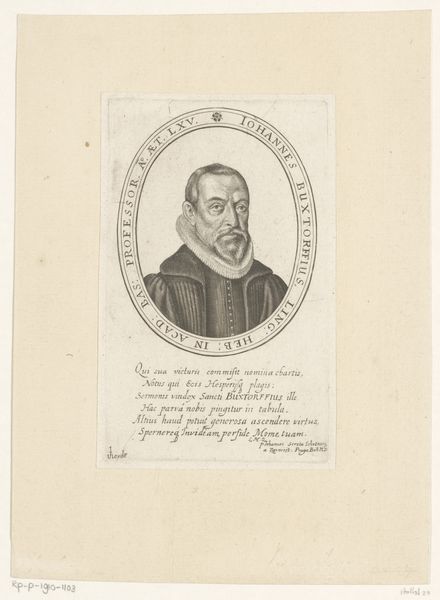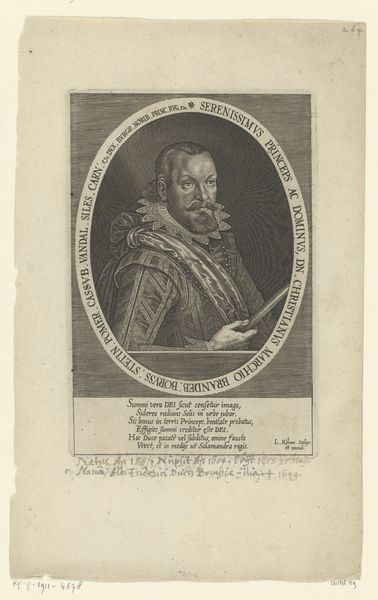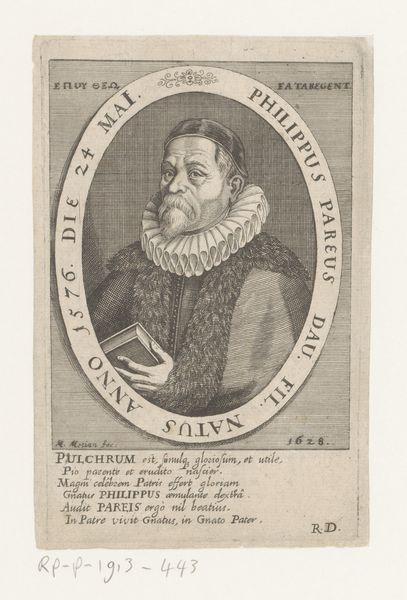
print, intaglio, engraving
#
portrait
#
baroque
# print
#
intaglio
#
engraving
Dimensions: height 165 mm, width 109 mm
Copyright: Rijks Museum: Open Domain
Johann Pfann created this portrait of Johann Saubert in 1646, likely using etching or engraving techniques on a metal plate to produce the print. The image's appearance is influenced by the linear nature of the engraving process. Close examination reveals a network of fine lines and cross-hatching that create the tonal variations and details of Saubert's face and clothing. The process involves skilled use of tools to incise lines into the metal, demonstrating a mastery of technique. Beyond its aesthetic qualities, the print reflects the broader social context of 17th-century Europe, where printed portraits served as important means of disseminating images of prominent individuals. The production of prints like this one was closely tied to the growth of capitalism and consumer culture, as they were produced and sold in multiples to a growing market of consumers. The skilled labor involved in the process is a reminder of the human effort behind the creation of even seemingly simple images. The piece challenges distinctions between fine art and craft, highlighting the importance of understanding materials, making, and context in grasping the full meaning of an artwork.
Comments
No comments
Be the first to comment and join the conversation on the ultimate creative platform.
